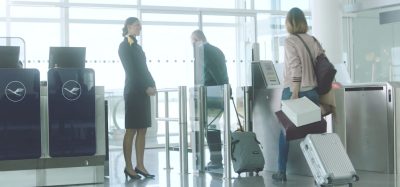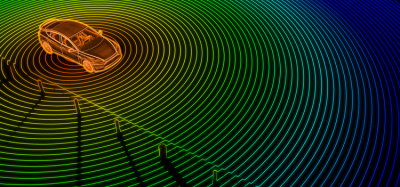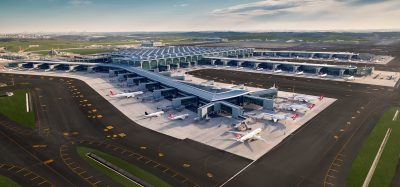Checkpoints – are we there yet?
- Like
- Digg
- Del
- Tumblr
- VKontakte
- Buffer
- Love This
- Odnoklassniki
- Meneame
- Blogger
- Amazon
- Yahoo Mail
- Gmail
- AOL
- Newsvine
- HackerNews
- Evernote
- MySpace
- Mail.ru
- Viadeo
- Line
- Comments
- Yummly
- SMS
- Viber
- Telegram
- Subscribe
- Skype
- Facebook Messenger
- Kakao
- LiveJournal
- Yammer
- Edgar
- Fintel
- Mix
- Instapaper
- Copy Link
Posted: 25 November 2005 | Norman Shanks, Principal Partner, Norman Shanks Associates International | No comments yet
Despite enhancements since 9/11, recognition is growing that work remains to be done before the level of security desired for passengers and their carry on baggage is reached.
Despite enhancements since 9/11, recognition is growing that work remains to be done before the level of security desired for passengers and their carry on baggage is reached.
Despite the somewhat predictable regulatory frenzy in the US and Europe immediately after the tragic events of 9/11, many people believe that little real benefit has been achieved in enhancing passenger and carry on baggage security. Indeed, some believe that the almost fanatical focus on small sharp objects has resulted in a reduced focus by the security screeners on the more traditional threats to civil aviation.
It is recognised that the hijackers in the four co-ordinated incidents on September 11 used box cutters to access the cockpit. This risk could have, and subsequently has been, mitigated by the simpler and less frustrating process of simply securing the cock pit door.
Also today, such an attack is unlikely to succeed, because many passengers would now follow the example of those passengers of United Airlines flight 93, who took it upon themselves to co-ordinate an attack against the hijackers. I think it is safe to assume that today’s passenger is much more enlightened in the role that they may have to play in such an event.
Recent newspaper reports in the US also suggest that four years after September 11th the TSA is looking at a range of new measures to simplify screening for regular air travellers. One of these measures will include a review of the prohibited items list, reducing the focus on small scissors and knives at the screening checkpoints, a welcome change for travellers.
Turning points for change
On a positive front there have been other improvements to the civil aviation security regime as a direct consequence of the 9/11 event. Probably the most significant improvement is that by January 2006 all checked baggage on a passenger aircraft must be now screened prior to loading. Although this has no relation to the actual events of 9/11, it is a welcome and long overdue enhancement of the global security programme. It also brings the rest of the world in line with a process that has been a regular requirement in the UK for the last decade.
The requirement to screen checked baggage in the UK was introduced as a consequence of the previous high profile, terrorist action on civil aviation, the PA 103 on 21st December 1988. Sadly, it takes such events to make the security process move forward.
The impact of the PA 103 was more closely felt in the UK than in other parts of the world. Despite being an attack on an American flight carrier with a large number of American citizens on board, the incident did not move the administration at that time to consider any major changes to their security operation. They certainly did not follow the example of the UK, which enhanced its national security programme in areas such as staff screening in secure areas and the implementation of 100 percent checked baggage screening.
The US response to the threat of bombs being placed in checked baggage was to introduce the original CAPPS programme. This was subsequently recognised by many as being severely flawed and providing a significantly lower prospect of preventing an improvised explosive device from being loaded onto a passenger aircraft.
It would be inappropriate to include the Probability of Detection (POD) figures in an unrestricted article. However it is reasonable to say that in the UK 100 percent hold baggage screening (HBS) provided at least a six or seven step improvement for the detection of a small IED in both transfer and originating baggage against the US CAPPS process. The US CAPPS process eventually used certified EDS technology, which although provides a higher level of POD, was doing so for roughly about 5 percent of bags only, and then only at selected points of origin.
Even today, with the US requirement to implement 100 percent hold baggage screening (as a consequence of 9/11) and the mandate to deploy only certified EDS technology, the TSA are caught between the proverbial rock and a hard place. To achieve 100 percent HBS within the wholly unrealistic timeframe imposed on them by the Senate, they had little choice but to compromise their high POD standard, by using alternative processes.
Today there are still only a relatively small number of airports which have been able to implement 100 percent HBS with certified EDS technology. Others have to either use this technology in the lobby or in the front of the check in counter, and incur long passenger queue times.
Passenger screening
Another area that has seen a significant change is the screening of passenger’s footwear. This followed the Richard Reid event of 22nd December 2001, when he attempted to initiate a shoe bomb on board American Airline flight 63, from Paris to Miami. This resulted almost immediately in passengers being required to take their shoes off when going through the passenger screening check points. However, despite this being implemented throughout the US, there is no consistency as to how it is achieved. A number of locations require that all shoes are removed, while others are focusing only on particular types of footwear.
I have, for example, witnessed ladies with ‘flip flops’ being told to remove their shoes for special screening and in others, men being allowed to keep their dress shoes on. Despite this being implemented by a single organisation, there just does not appear to be a consistent approach to how this screening is handled. However, I suspect that until there are some more effective means, such as the automated screening of footwear and the lower leg, we are likely to continue with this mismatch of processes.
Screening of people, not just their footwear, has also been a subject of increased scrutiny. It is now much more common to see body frisks or pat downs. Although the UK and some other countries have used the pat down search as a routine component of their check point screening, it is a process that over the last 30 years or so has incurred a remarkably low number of complaints. The Diana Ross incident at Heathrow September 22 1999 aside, most passengers accept this as an unwelcome but necessary part of the airport screening process.
Recently some airports have trialled automated people screening with backscatter x-ray at some airports. This is an effective process for finding weapons and bombs hidden in clothing or taped to the body, but it will be some time before it is routinely deployed. There are two key problems to be resolved. The first is the supposed privacy issue, as the x-ray image generates an outline of the soft body tissue underneath the clothing. The second is that passengers and staff are subjected to additional radiation. However it should be remembered that the dosage is only a fraction of the natural radiation experienced during flight.
The privacy issue is more difficult to resolve and the equipment manufacturers are now looking at masking the image, so that only the threat item will be seen. That aside the trials today suggest that the privacy issue, like the radiation concerns, are more perceived than real. The absence of direct eye contact between the security screener and the passenger avoids potential embarrassment to both, and the fact that the passenger can opt for the body frisk (pat down) search greatly reduces the problem
Future trials of newer technology using millimetre wave or terrahertz technology may also help address privacy concerns, although these technologies are not yet field proven and the image available for the detection of small concealed items is not yet as effective as the backscatter technologies.
Baggage screening
The area that I have more concern with is the lack of progress in screening carry on baggage for explosives. The systems in daily use around the world today were developed to address the threat of hijack from either hand guns or knives. However despite many claims in the past since the introduction of dual energy x-ray systems, these conventional x-rays simply cannot automatically detect explosives. To achieve explosive detection, it is necessary to use the (much more) expensive advance technology systems or the (even more) expensive EDS systems used today for 100 percent checked baggage screening.
Deployment of these systems in a check point screening area has other problems aside from cost, such as footprint and throughput, but the US is at least considering R&D trials on how smaller EDS type systems could be deployed in airport check points. Unfortunately the cost, space and throughput problems associated with these larger systems are likely to delay widespread implementation. A more rapid solution may be the latest enhancements of conventional x-ray. There are at least three of the leading x-ray manufacturers who claim to have automated software algorithms for automatic detection of explosives.
However, it can be predicted that the detection of small, thin amounts of plastic explosives with an acceptable level of false alarms can be significantly improved when used in combination with quadrupole resonance technology, which has a proven performance in detecting a broad range of plastic materials at a very high POD and low false alarms.
Quadropole Resonance
Quadrupole Resonance (QR) systems use radio-waves to automatically detect plastic explosives typically used in civil aviation attacks. This includes very thin or ‘sheet’ explosives as well as bulk plastic explosives (including those which may have been distributed into smaller amounts for concealment in carry-on bags). QR-based systems detect the range of explosives which are not readily detectable using x-ray imaging systems. Furthermore they do this without the removal of electronic items from baggage prior to screening and without human operator image interpretation.
Typical throughput is 200-400 bags per hour. Quadrupole Resonance systems are designed to work in conjunction with x-ray systems.
QR is recognised as the most effective way to screen for sheet and distributed explosives in carry on bags. Detection sensitivity of sheet and distributed explosives is substantially higher with QR systems than conventional and automated / screener assist x-ray systems. Unlike conventional and automated / screener assist x-ray systems, the explosive can be dispersed throughout the bag with no degradation in system performance – a key feature for carry-on screening in combating the suicide bomber threat, where a device may be prepared on board by one or more individuals.
The result is that the use of QR significantly strengthens two critical vulnerabilities that exist today at the checkpoint: the ability to screen for sheet explosives, and the ability to screen for distributed explosives. QR also assists x-ray systems in screening for bulk plastic explosives.
Importantly, the latest generation of QR systems now incorporates specific technology as a countermeasure for the type of shielded explosive materials that were a significant concern and limitation of earlier systems.
QR systems have been designed for integration with x-ray systems from a number of manufacturers and are particularly effective when integrated with the latest generation of checkpoint x-rays with automated, explosive detection software algorithms. One such example is the combination of QXR 1000 from Rapiscan Systems and their Screener Assist Technology, with QR Sciences, a small dynamic Western Australian company providing the Quadrupole Resonance technology. The result is that the combined system increases the range of threats that the TRX system can effectively detect to include sheet and distributed explosives. This approach also boosts bulk plastic explosive detection. Inspection throughput is 200-400 bags per hour.
Combined systems have been proven in recent government run tests in the US and we can expect to see operational trials taking place at airports over the coming months.
Norman Shanks
Norman Shanks is founder and Principal Partner of Norman Shanks Associates International, an Aviation Security and Airport Management services consultancy. He was the Airport Security Manager for Heathrow Airport from 1986 – 1991. Previous projects involvement includes the planning of the aviation security systems and operations for Hong Kong International Airport project from 1996 – 1997. He has also worked for ICAO’s Technical Cooperation Branch, chaired the ACI Security Committee and is co-authored of ‘Handbook of Checked Baggage Screening – Advanced Airport Security Operation’.


















